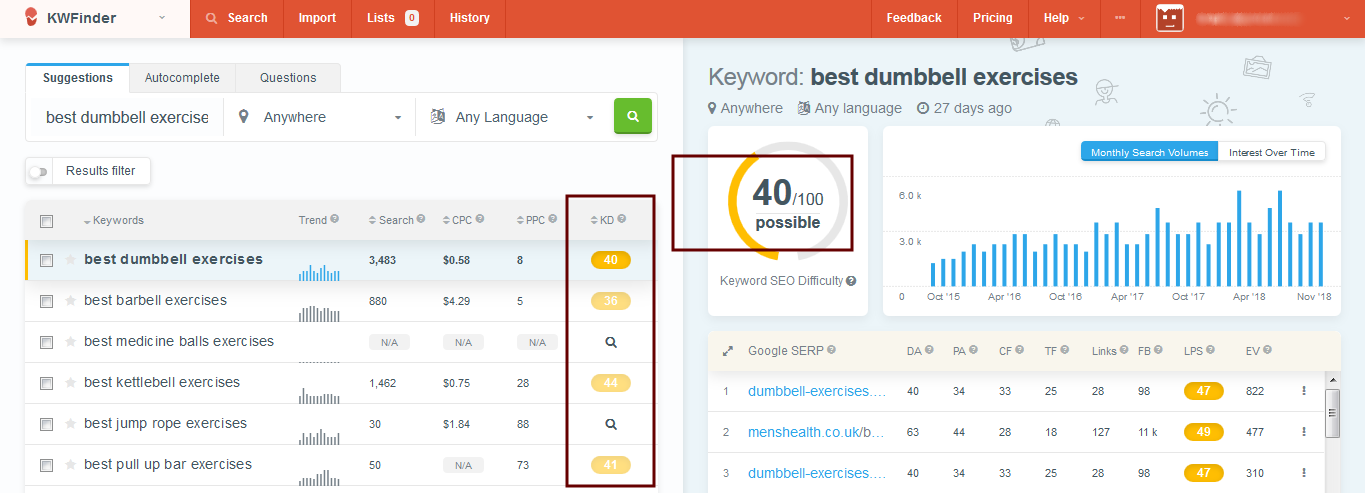Understand Your ‘Unique’ Niche
Your niche is never entirely pre-defined. Regardless of your niche, you will be presenting a unique set of product categories. You will have to break down on your niche and sub-niches too. If your niche is a fat loss you might want to narrow down to exercises or diets or programmers or any other sub-niche.
When dealing with exercises, you will like to promote exercise equipment along with your content. In the case of diets, you might want to promote ingredients, cooking accessories or even e-books. It’s essential to understand your specific set of sub-niches and product categories.
Get Keyword Ideas
Before diving into keyword research, jot down your ideas. For instance, if you operate in the home gym niche, make content categories in that space. There would be agility exercises, power training, aerobics and more. In every category, round up the possible lineup of products you would promote.
There would be treadmills, dumbbells, elliptical, kettle-bells, skipping ropes, barbells and more. Additionally, you can link out to other sites dealing on the tech side including fitness apps. Think about your possible YouTube content and Instagram hashtags. These ideas should form the base for your keywords.
Brand names and buyer intent phrases should be also put into the mix, to identify the perfect keyword phrases. When dealing in home gym space, you got brands like Rogue Fitness, Bowflex, Marcy, etc… Their products are already packed with tons of reviews, demo videos, unpacking videos and more.
If you want to cash out on the affiliate revenue model, you need to combine keywords with buyer intent phrases. For instance, replacing “home gym” with “Best home gyms brands Uk” creates a whole lot of difference in sales. Listicles are having an impact too. You might want to use keywords like “top 10 home gym exercises” to bring in the traffic.
Service: Buy Our Turnkey Websites and Start Making Money Right Off The Bat!
Use Microsoft Excel and Notepad for Keyword Research
There aren’t many technicalities in manual keyword research. You can start with Microsoft Excel and Notepad. Create an Excel worksheet for this purpose. Write down all the variations of the primary phrases that define your website.
For example, create a list like this – Best *equipment* exercises. Replace *equipment* with ‘dumbbell’, ‘barbell’, ‘medicine balls’, and more. Make more such lists like that. Excel helps with creating variations like that. Copy the list to text pad and clean up the irregular spaces between words.
Google Adwords Keyword Planner
Login to Google Adwords and go to Planning > Keyword Planner. You essentially want to use the second option, ‘See search volume and forecasts for your keywords’. Paste the entire list of your phrases in the box and ‘Get Started’.
The returned data is not ready for use in organic marketing and SEO. What it will show us is which keyword phrases actually get clicks. Remove the phrases which have extremely low search volume.
Regardless of the amount of brainstorming put in, you might have stilled missed out on plenty of keyword ideas. You can create an alternate list with tools like keyword.io, which you can later merge with your original list.
Visit keyword.io and enter your seed keyword. Pick a Google location and click ‘Search’. It returns with a long list of additional keywords. You can manually filter the list based on relevancy.

To ensure profits, you need to pick keywords that are easy to rank. Visit KWFinder.com and enter your seed keyword. It returns a list of keyword phrases along with ‘Keyword SEO difficulty score’.
Keywords with cores under 30 or shown in green are easy to rank. Scores under 50 would mean that the ranking for the particular keyword is still possible.
Additionally, you can import your entire keyword phrases list and filter them based on ‘Keyword SEO Difficulty’ score.

